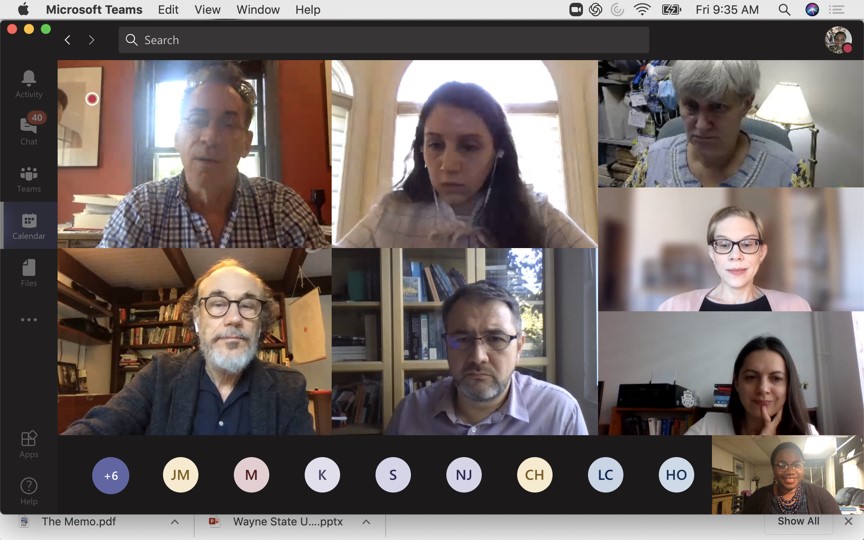
The collaborative effort of a medical student, resident and faculty member at the Wayne State University School of Medicine earned a winning spot in the American Medical Association’s Health Systems Science Student and Resident Impact Challenge.
The Health Equity and Justice in Medicine Quality Improvement Project, “Teaching About Implicit Bias Through Visual Thinking Strategies Using the Virtual Platform,” will be featured in the AMA’s 2020 print edition of Medical Student, Residents and Fellows Making an Impact.
Second-year medical student Suma Alzouhayli and second-year Internal Medicine-Pediatrics resident Heba Osman, D.O., led the project, with Assistant Professor of Internal Medicine-Pediatrics Ijeoma Nnodim Opara, M.D., serving as their faculty mentor. They also presented the project at Western Michigan University’s virtual 2020 Medical Humanities Conference on Sept. 25.
The winners are invited to present their projects at the AMA’s next ChangeMedEd conference, Sept. 29–Oct. 1, 2021, in Chicago.
Visual Thinking Strategies, or VTS is a teaching method utilizing art to help students improve observational, critical thinking and communication skills. It requires a trained facilitator to engage students with a work of art using a rigorous process of seeking an interpretation of what they perceive is happening in the work.
Increasingly, there has been a call for health centers and medical education institutions to improve the education of medical trainees in health disparities and equities.
“We present a unique partnership through a collaborative educational activity to address implicit bias using VTS,” Dr. Osman said. “In alliance with one of the most visited museums in Michigan, the Detroit Institute of Arts, our Wayne State University/Detroit Medical Center Internal Medicine residency program, the largest ins outheast Michigan, delivered a two-hour VTS workshop in the DIA to elicit reflections on implicit bias. VTS-trained DIA facilitators delivered the workshop as the residents engaged with art.”
Before the workshop, an informal survey revealed that less than 10% of the residents were aware of VTS, none had ever used VTS methods and only a few had visited the DIA. After the workshop, residents reported satisfaction with the experience, increased appreciation for art and the DIA, and increased awareness of their implicit biases.
“As graduate medical programs struggle to provide effective learning experiences about diversity, inclusion, health disparities and implicit bias, VTS can provide an effective methodology to strengthen cultural competency for medical trainees,” Dr. Osman said. “It is an efficacious tool for teaching critical thinking on social justice and equitable community engagement as it immerses learners in the community and out of the hospital/clinic setting. We are convinced that this will enable physicians-in-training to provide higher quality of care and contribute to decreased health disparities.”
Organizers plan to expand the workshop into orientation of 50 resident physicians before they begin clinical duties.
“I am so grateful for the opportunity to work on a project that is innovative and integral to medical education. Examining art via the visual thinking strategies technique not only enhances our awareness of our implicit biases so that we can correct them, VTS also enhances critical thinking, observation and communication skills that are necessary for practicing humanistic medicine,” Alzouhayli said.
The challenge focused on how medical students and residents like Alzouhayli, Dr. Osman and others across the country have applied health systems science to impact patients, physicians and health systems during the COVID-19 pandemic. Training in health systems science, the third pillar of medical education, has empowered medical students and residents to find ways to contribute to the response, the AMA said.
“At a challenging time for this country and the health system, your work has been a true bright spot, and it is an honor to be able to recognize it in this small way,” said AMA Vice President of Undergraduate Medical Education Innovations Kimberly Lomis, M.D., in writing the trio.